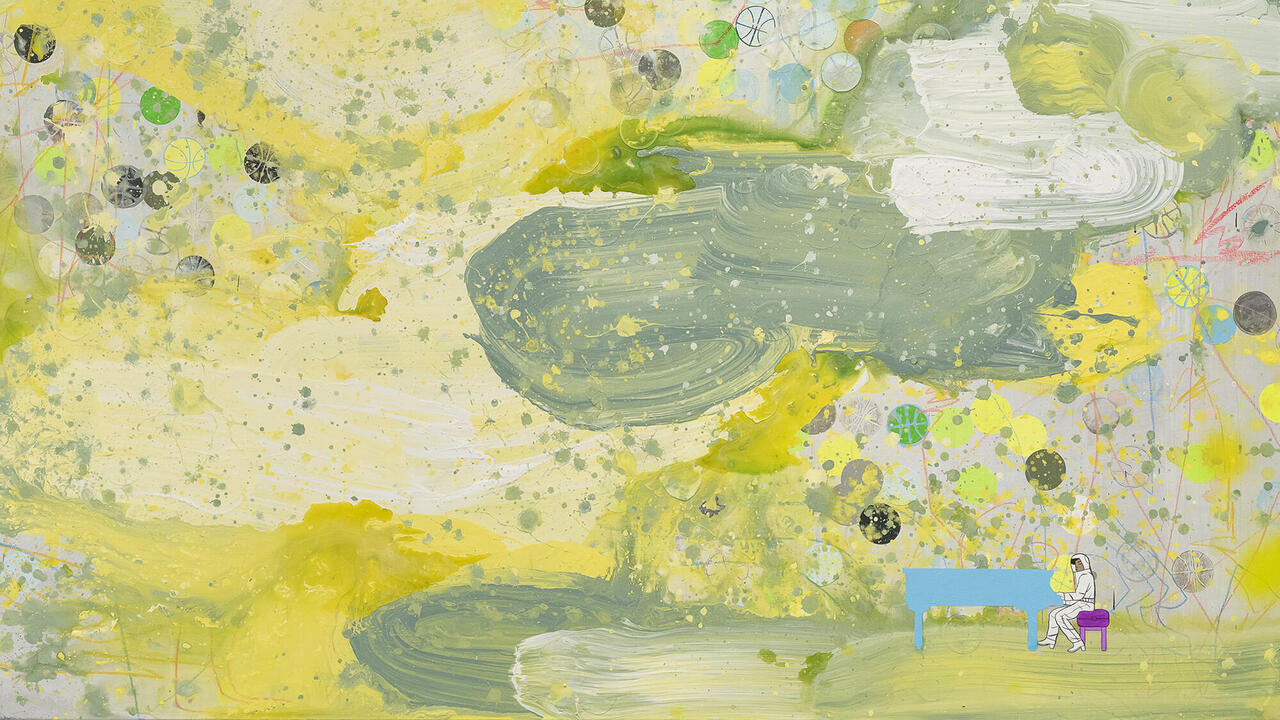Primal Scene
What was so special about Cologne’s art scene in the ’90s?
What was so special about Cologne’s art scene in the ’90s?
Looking back at the Cologne art scene of the 1980s and early ’90s, the view is dominated by one thing: networks, people coming together to make art, or if not to make art then at least to meet in bars at night to discuss it. Closed local networks, then, that were tight-knit and intense as opposed to the open, dispersed networks of today’s Facebook culture. Be it the ‘Hetzler Boys’ crowd around Albert Oehlen and Martin Kippenberger, or the Galerie Nagel set with Cosima von Bonin and Michael Krebber: it seems, in retrospect at least, that art here was always made in circles of friends. But why did this particular aspect become so central to the ongoing historicization of the Cologne art scene since the mid-2000s? What makes this close association of art and life so attractive today?
As early as 1983, in an article for Kunstforum International, Jutta Koether spoke of ‘nightly coteries’ and the importance of ‘circles’ in the double sense of the circulation of ideas and the closed circles in which this took place – specifically the idea of a new ‘painting’ after Conceptual art, as concocted by the ‘Mühlheimer Freiheit’ group around Walter Dahn and Jiri Dokoupil and marketed in association with the gallerist Paul Maenz. Almost a quarter century later, the Make Your Own Life: Artists In & Out of Cologne (2006) show at the Institute for Contemporary Art in Philadelphia further emphasized this social component in its historicization and reception of the ‘Cologne School’. Curator Bennett Simpson spoke of the historical Cologne as a place where ‘artists perform themselves within the social networks and communities of their peers’ and subject themselves to a ‘process of critical self-construction’. Commenting on this exhibition in 2011, the young New York art historian Michael Sanchez wrote: ‘There is the tinge of historical inevitability in the fact that interest in the Cologne school would arrive with such force in America at precisely the same time that Facebook exploded.’ Perhaps the fascination of a closed network is all the greater from the viewpoint of an open one.
The way Sanchez links art historical interest and (virtual) socializing may be slightly frivolous, but it hits the nail on the head: the historical Cologne art scene provides a perfect screen onto which today’s thoroughly networked art world can project its primal scene myth. From the perspective of today’s constant economization of relationships and identities, the 1990s in Cologne appear above all as a time when acting through networks and working on your profile could still be considered in a positive sense as a (supposedly) left-wing, emancipatory and, above all, self-determining project. The totally networked present imagines not its opposite – i.e., isolation – but the historical alternative of a good form of interacting, one that is productive and identity-shaping.
One aspect of the Cologne complex is often glossed over in this version of history however, as the establishment of a social network in the 1990s in a spirit of open and offensive criticism also involved some pretty brutal exclusions. This is only to be expected when the material being worked with is the social fabric itself. Those who left themselves open to attack, branded a traitor or spoilsport for whatever reason, could expect to be treated with open hostility. Today, by contrast, specific criticism is rarely voiced, the principle of exclusion having been largely replaced by indifferent use of the ‘like’ button. At worst, people just ignore each other – and in times when websites like Contemporary Art Daily function purely by selecting material to feature rather than putting it in context or making value judgments, ‘not featuring’ is probably the toughest possible form of criticism.
On blogs like Art Observations with Jerry Magoo, Cologne insider jokes are rehashed over and over, and gestures of supposedly harsh criticism are served up under headings like ‘Which art is the worst out of all the trash Michael Krebber has knowingly / unknowingly breeded?’ (sic.) But one cannot help feeling that the focus here is less on actual criticism and more on a strangely twisted search for recognition from the previous generation, disguised as distancing (by staging a tongue-in-cheek re-enactment of the generational conflict in Cologne between the laddish painting of the ‘80s and the ‘discourse art’ of the ‘90s). ‘Genuine’ negativity is something people can no longer afford – it can only be flirted with. The structure of the open networks in which one circulates is too precarious – too much competitive pressure, and too much fear of losing friends.
Translated by Nicholas Grindell















